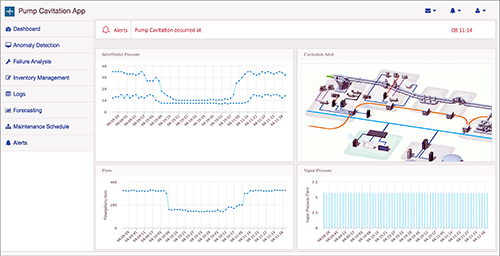Sep 14, 2016Silicon Valley software company FogHorn Systems develops real-time edge-intelligence products for industrial internet applications. In other words, its software processes and analyzes data collected from sensors deployed in industrial applications—such as for tracking diagnostic data on manufacturing equipment, or monitoring for leaks or pressure changes inside an oil pipeline. Performing these processes at the point of data collection, rather than doing so in cloud-based servers, has two main benefits, says FogHorn Systems' CTO, Sastry Malladi. This approach, often called fog computing, reduces the volume of data transmitted to the cloud—along with associated cloud-hosting costs—and can enable faster decision-making.
"You might have hundreds of sensors, and they might be measuring data every few seconds," Malladi says. "To send that data through the cloud [where it is analyzed] and then wait for the signal back at the edge can add hundreds of seconds." In highly time-sensitive scenarios, that might be too long for any automated corrective action to be taken. "So you want to do as much processing on the edge as possible."
To that end, FogHorn Systems yesterday announced the general availability of its Lightning software platform, which it has been developing throughout the past two years and deploying with a small group of beta customers, including General Electric (GE), which uses Lightning to power data-analytics functions as part of its Predix IoT platform. GE uses Predix for onsite sensor data processing in Industrial Internet of Things (IIoT) applications by running it, and Lightning, on edge devices, such as networking equipment and gateways.
"Predix did not have real-time data processing," Malladi explains, "and that is what we offer."
Specifically, GE is using Lightning at one of its plants that produces industrial-grade electrical products for power grids. Here, it is working with FogHorn to apply real-time analytics for maximizing manufacturing yields from data emitted by hundreds of sensors attached to each assembly line.
"By the end of the year, Predix will have our capabilities embedded inside it," says FogHorn Systems' CEO, David King, who adds that his company is also working with a handful of other customers that he cannot disclose.
Lightning's analytics engine processes streaming datasets from sensors and then forwards them on to an application that triggers an action or alert, or simply passes them onto another database, such as a data historian, which may be cloud-based. For example, King explains, Lightning is being used in combination with pressure, flow and temperature sensors at a manufacturing plant in order to monitor pumps and control valves. The software analyzes the sensor data to identify variances that could lead to damage to seals, bearings or impellers (rotating arms) inside the pumps and control valves. Lightning triggers alerts that are sent to maintenance workers, advising them to take corrective action (such as increasing or decreasing flow) in order to avoid a failure. Then, the software passes the data to a historian, which further analyzes the information for predictive maintenance applications.
King says what makes FogHorn unique is its ability to process complex event data on edge devices (gateways), while most of its competitors run this type of analysis in the cloud. He points to OSIsoft, a provider of database software for process manufacturers—citing OSIsoft's PI System historian data software as an example of comparable but cloud-based data-analytics software.
"We're trying to move that big-data intelligence down to the edge," King states. "We think we supplement and complement what [cloud-based analytics providers] do. Some of them agree, and others think we're a threat."
FogHorn Lightning is available directly from FogHorn, as well as from Lightning-certified IIoT application developer partners. Lightning is also accessible on the Microsoft Azure Marketplace, and FogHorn is a certified SAP HANA application solution partner. In terms of IoT gateway hardware support, FogHorn is a certified Dell IoT solution partner, and Lightning has also been validated on HPE Edgeline IoT Gateways, as well as other Intel x86 IoT server platforms.
The software is available in two versions: Lightning Micro and Lightning Standard. Micro performs data processing and real-time analytics, and can ingest data in a number of industry formats, including OPC-UA, MQTT and Modbus. Its real-time data-streaming analytics engine comes with hundreds of built-in functions, along with a software-development kit for writing applications in C++. The Lightning Standard version includes these features and functions, but also enables users to analyze historical data and includes data-visualization tools and basic machine-learning algorithms. Its SDK also supports Java and Python, and the publication of processed data to external, cloud-based data stores in Apache Hadoop, Kafka, Microsoft Azure and Cloud Foundry RIAK.
Single unit subscription list pricing starts at $5,000 to $10,000 per edge gateway, per year (depending on edge configuration), regardless of data consumption, according to King, who adds that volume-based discounts and SI/OEM channel discounts are available.
In July 2016, FogHorn Systems announced that it raised $12 million in Series A funding, with March Capital and GE Ventures acting as lead investors. Robert Bosch Venture Capital GmbH, Yokogawa Electric Corporation and Darling Ventures also contributed.



